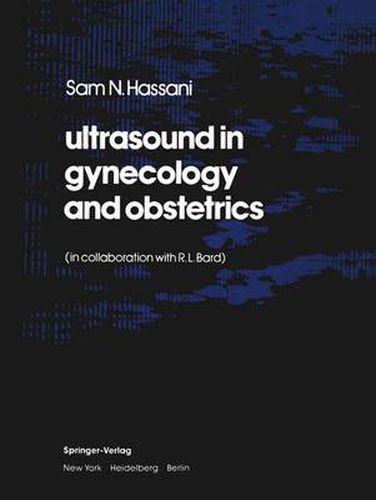Readings Newsletter
Become a Readings Member to make your shopping experience even easier.
Sign in or sign up for free!
You’re not far away from qualifying for FREE standard shipping within Australia
You’ve qualified for FREE standard shipping within Australia
The cart is loading…






This title is printed to order. This book may have been self-published. If so, we cannot guarantee the quality of the content. In the main most books will have gone through the editing process however some may not. We therefore suggest that you be aware of this before ordering this book. If in doubt check either the author or publisher’s details as we are unable to accept any returns unless they are faulty. Please contact us if you have any questions.
by Dr. Donald L. King The past decade has seen the ascent of ultrasonography to a preeminent position as a diagnostic imaging modality for obstetrics and gynecology. It can be stated without qualification that modern obstetrics and gynecology cannot be practiced without the use of diagnostic ultrasound, and in particular, the use of ultrasonogra phy. Ultrasonography quickly and safely provides detailed, high resolution images of the pelvic organs and gravid uterus. The quality and quantity of diagnostic information obtained by ultra sonography far exceeds anything previously available and has had a revolutionary impact on the management of patients. High resolution static images permit the intrauterine diagnosis of fetal growth retardation and fetal abnormalities. In addition to tradi tional images, newer dynamic imaging techniques allow observa tion of fetal motion, cardiac pulsation, and respiratory efforts. The use of ultrasonography for guidance has greatly augmented the safety and utility of amniocentesis. One of the great virtues of diagnostic ultrasound has been its apparent safety. At present energy levels, diagnostic ultrasound appears to be without any injurious effect. Although all the availa ble evidence suggests that it is a very safe modality and that the benefit to risk ratio is very high, the actual safety margin for its use Vll as yet remains unknown. As a consequence, practitioners are urged to limit its use only to those situations in which genuine clinical indica tions exist and real benefit to the patient is likely to result.
$9.00 standard shipping within Australia
FREE standard shipping within Australia for orders over $100.00
Express & International shipping calculated at checkout
This title is printed to order. This book may have been self-published. If so, we cannot guarantee the quality of the content. In the main most books will have gone through the editing process however some may not. We therefore suggest that you be aware of this before ordering this book. If in doubt check either the author or publisher’s details as we are unable to accept any returns unless they are faulty. Please contact us if you have any questions.
by Dr. Donald L. King The past decade has seen the ascent of ultrasonography to a preeminent position as a diagnostic imaging modality for obstetrics and gynecology. It can be stated without qualification that modern obstetrics and gynecology cannot be practiced without the use of diagnostic ultrasound, and in particular, the use of ultrasonogra phy. Ultrasonography quickly and safely provides detailed, high resolution images of the pelvic organs and gravid uterus. The quality and quantity of diagnostic information obtained by ultra sonography far exceeds anything previously available and has had a revolutionary impact on the management of patients. High resolution static images permit the intrauterine diagnosis of fetal growth retardation and fetal abnormalities. In addition to tradi tional images, newer dynamic imaging techniques allow observa tion of fetal motion, cardiac pulsation, and respiratory efforts. The use of ultrasonography for guidance has greatly augmented the safety and utility of amniocentesis. One of the great virtues of diagnostic ultrasound has been its apparent safety. At present energy levels, diagnostic ultrasound appears to be without any injurious effect. Although all the availa ble evidence suggests that it is a very safe modality and that the benefit to risk ratio is very high, the actual safety margin for its use Vll as yet remains unknown. As a consequence, practitioners are urged to limit its use only to those situations in which genuine clinical indica tions exist and real benefit to the patient is likely to result.